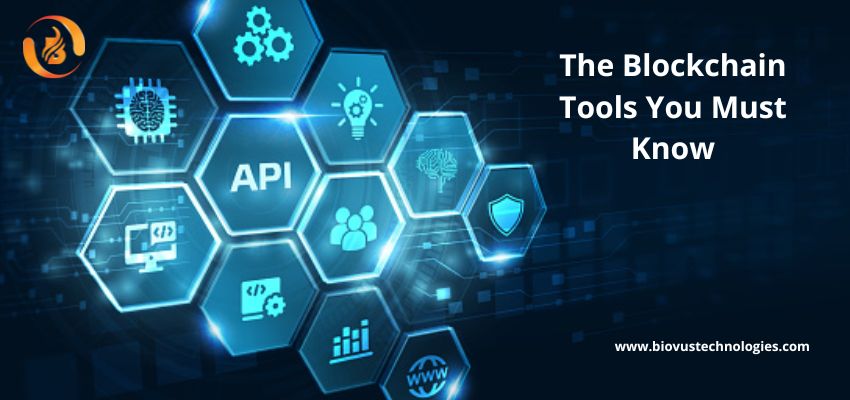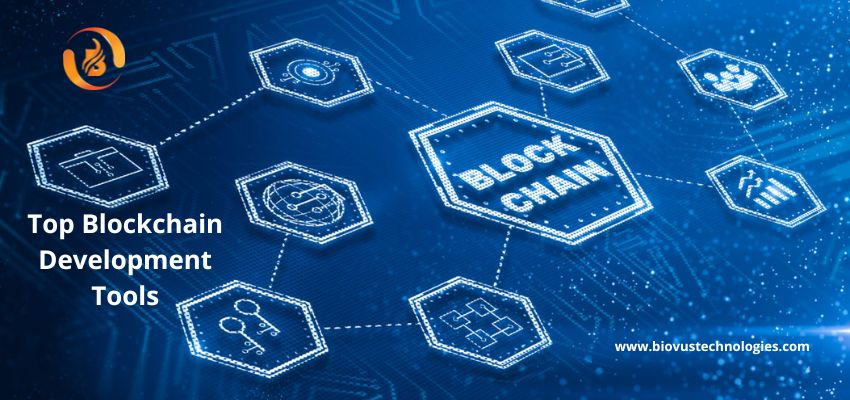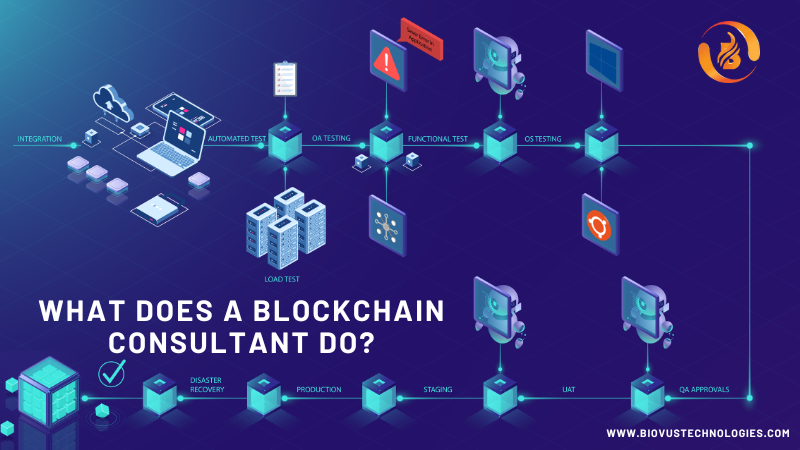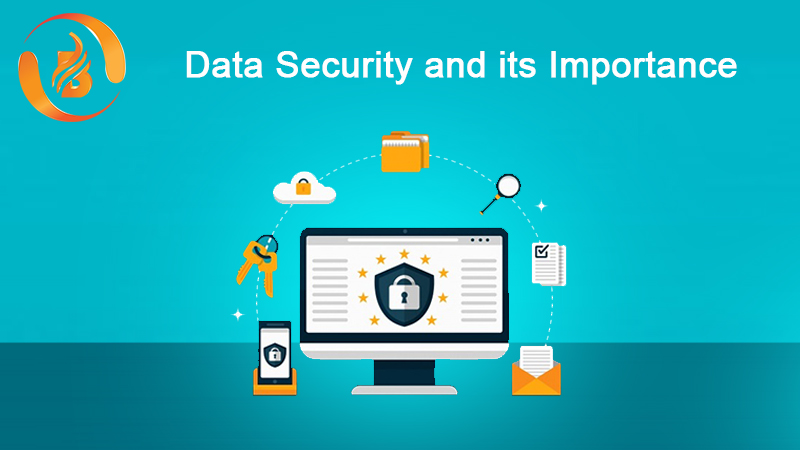What is meant by Blockchain development tools?
Blockchain Development tools are computer programs that help developers and programmers build, change, test, and fix software or program code on a personal computer. Development tools include text editors, compilers, simulators, and IDEs (Integrated Development Environments). These tools aid in converting spoken language into computer-understandable language. Airborne software for the flight control system, such as control law software, is cross-compiled, created, and loaded or populated as executable object codes into the flight control computer using embedded software and development tools. Development tools are generally considered to be essential to the success of microprocessors.
What are the Top Blockchain development tools?
1. Solidity
The most widely used programming language for blockchain development at the moment is Solidity. A high-level, object-oriented language called Solidity incorporates a number of features from other languages, most notably C++. Because Ethereum, regarded as the de facto blockchain, employs Solidity for creating smart contracts, many developers want to study it. Solidity is Turing-complete, enabling you to build sophisticated programs with a wide range of capabilities.
Starting your career as a blockchain developer by learning Solidity is a terrific idea. Due to Solidity’s ubiquity, you can find helpful tutorials, guidelines, and documentation to introduce new users. As long as they are compatible with the Ethereum Virtual Machine, Solidity apps can also operate on other blockchains (EVM). This implies that you can launch projects on blockchains that support EVM, like Binance Smart Chain, Avalanche, Polygon, Matic Network, and others.
2. Geth
Geth is one of the first names mentioned among the greatest blockchain tools now on the market. Essentially, it implements an Ethereum node using the Go programming language. Three alternative interfaces, including the interactive console, JSON-RPC server, and command line, are available for Geth. On Linux, Windows, and Mac operating systems, Geth can enable blockchain development.
It is the perfect tool for various Ethereum Blockchain functions, such as creating smart contracts, transferring tokens, viewing block histories, and mining ether tokens. Users can connect to pre-existing blockchains or create their own after installing Geth. The benefit in this scenario is that Geth can make things simpler by connecting to the Ethereum main network automatically.
3. Ganache
As a component of the Truffle Suite, Ganache gives Blockchain developers complete control over the chain’s functionality so they may build their own private Ethereum blockchain for testing Dapps, analyzing the chain’s state, and running commands.
The most significant feature of Ganache is that also allows users to carry out all acts that could be carried out on the main chain without having to pay for them. Because it offers a variety of options, including a built-in block explorer and sophisticated mining settings, Ganache is a particularly well-liked Blockchain tool among developers. During the development phase, Ganache is used by blockchain engineers to test their smart contracts.
4. Prysm
Prysm can be characterized as a tool made for programmers to aid in the creation of decentralized applications. Additionally, it offers a thorough tutorial on how to create your first decentralized application so that you can get started right away—a Go-written, fully-featured client for the Ethereum 2.0 network. The Prysm project is an implementation of Ethereum 2.0’s standard protocol using the Go programming language. It functions as a validator client and includes a full beacon node, enabling participation in blockchain consensus.
Prysm uses the best tools available for both interprocess communication and the production server. BoltDB, Google’s gRPC libraries, key-value stores, the Protocol Labs’ libp2p library for all peer-to-peer networking, and Google’s gRPC libraries are all utilized.

5. API and SDKs
APIs and SDKs are some of the most crucial tools for Web3 developers, along with frameworks and IDEs. Both aid in the development of dApps and assist blockchain developers in solving specific development-related issues. The interaction between various pieces of software is made simpler via application programming interfaces, or APIs. By using an API to obtain data to enhance your dApp, you can expand on existing functionality.
Software development kits, or SDKs, are a group of software tools for creating apps for a specific platform. Platform-specific dApp development is also made simpler by blockchain development SDKs.
6. Web3j
The makers of Java WebSocket API developed Web3j as a tool for blockchain. This useful library enables interaction and connection between developers and blockchain-based Ethereum-based decentralized apps (dApps). Additionally, it supports connecting to a nearby or distant Ethereum node using the Generic JSON RPC interface.
This software’s advantage is that you can engage with these transactions without having to build up additional infrastructure or programming languages. Furthermore, you don’t need to grasp how miners interact with these contracts or how consensus works. Any web-based browser can be used to access the blockchain tool because it runs on JavaScript. To use this kind of blockchain tool, you’ll need an Ethereum node that can connect to the Ethereum network over HTTP. To connect to the Ethereum network, utilize the Web3.js MetaMask add-on.
7. Embark
Embark can help if you’re looking for a blockchain development framework to employ for your applications on decentralized networks. Users may manage their dApps with the aid of this blockchain management tool, which also gives you all the resources you need to create and introduce a new version.
You may develop a stand-alone HTML5 application that makes use of decentralization. New smart contracts can also be created and deployed using their JS code. The ability of these tools to monitor for modifications you make to the contracts is what makes them so interesting for administering blockchains. If they do, they will immediately alter the contracts and also update the decentralized software to it. The benefit of this software is its ability to move smart contracts. Users might use any common programming language, including Meteor, Angular, React, and many more, to work on it.
8. Alchemy NFT API
Many developers are focusing on this sector as a result of the explosive growth of non-fungible tokens (NFTs). The NFT API from Alchemy is the ideal tool if you intend to build an NFT application. Developers can use the Alchemy NFT API to display metadata for various NFTs in a user-friendly way. Additionally, it supports other chains (including Ethereum, Polygon, Flow, etc.), giving customers more options when selecting NFTs.
The majority of technical chores involved in communicating with NFTs are abstracted away via the NFT API. Customers may check and purchase NFTs without having to understand smart contracts thanks to the NFT API’s integration into your platform.
Closure Note
Only if you start off with the correct tools can blockchain development be an interesting experience. Building a strong development stack facilitates application development and raises the level of output quality. The Blockchain platform is still in its infancy, therefore if you are constantly curious to try new things and learn new skills, you can be sure that you will have a bright future in blockchain.
Visit us on: www.biovustechnologies.com








Comment on “What Are The Top Blockchain Development Tools?”